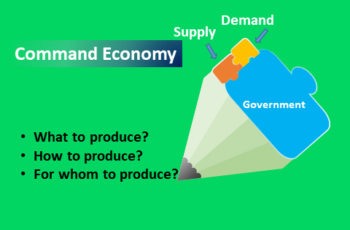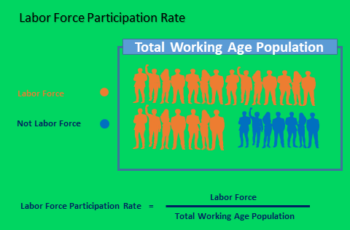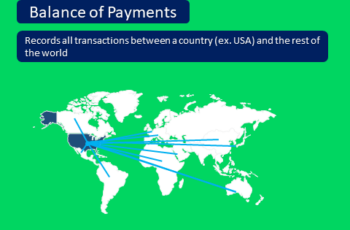The Current Account reflects the balance of transactions between a nation and the rest of the world. For example, the United States Current Account reflects the balance of transactions between the US residents and all other countries in the world.
It is published by a governmental agency and generally quarterly.
The Current Account Balance is one of the two components of a country’s balance of payment.
The Capital Account or Financial Account is the other component of the balance of payment.
The current account itself components are:
- Balance of trade: the difference between a country’s imports and exports of goods and services’ monetary value;
- Net primary income (factor income): income on foreign investments minus income of foreign investors inside a country, such as interest earned and dividends received.
- Net cash transfers: is the net payment to other countries without receiving goods and services in return. Examples of transfer payments are financial aid and government subsidies for certain businesses.
In short, the current account balance is a country’s total net balance of trade, net primary income, and net cash transfers.
Notice that all payments are counted both by government and private payments.
Why it is called the Current Account?
Users of this data call it Current Account because they assume that goods and services are consumed in the current period.
Current Account Balance Formula
In simple math language, the Current Account formula is the following:
Current Account = Balance of Trade + Net Earnings from abroad + Net Transfers
Mathematically, the formula for a current account is the following:
Current Account = (X – M) + NE + NT
In the above formula:
- X = Exports
- M = Imports
- NE = Net earnings from abroad
- NT = Net transfers
Current Account Deficit and Surplus
A Current Account Deficit indicates that the total monetary net value of a country’s Balance of Trade, Net earnings, and Net transfers is negative.
Or, the (Account Account = balance of trade + net earnings + net transfers < 0)
On the other hand, the opposite is true for the Current Account Surplus. A Current Account Surplus states that a country’s total net monetary value of Trade Balance, Net Earnings, and Net Transfers is positive.
Is a Negative Current Account a Bad Thing?
The short answer is “not necessarily” because a negative balance means that citizens consume more than what they produce. And they enjoy a higher standard of living.
However, accumulation over a long period can cause panic and may change other countries’ opinions about the domestic economy.
The following map by the International Monetary Fund (IMF) shows the Current Account Balance by country in 2023. Countries with green color have a surplus balance and an orange deficit.
For example, the United States’ Current Account Deficit is almost $800 billion. And the UK’s balance is also negative. Both of these nations have a higher standard of living than Iran and some African nations that have a Current Account deficit.
Nothing lasts forever. Countries with deficits should be aware of this. Countries with surplus balance such as China can use its surplus to gain political and economic powers to challenge the current largest economy (USA) in the world.
Top 10 Countries with the Largest Current Account Balance Deficit
The country with the largest Current Account Deficit is also a country that has the largest economy in the world.
It is the United States of America with 759.15 billion USD.
In fact, the deficit of the United States is almost twice that of all other nine countries with 400.44 billion dollars combined.
The USA can afford this deficit because its currency is the international currency and the most powerful country in the world. United States issues bonds to fund its deficit and investors buy them because they trust the US economy.
And here how it looks like in a column chart.
Top 10 Countries with the Largest Current Account Balance Surplus
China, the second-largest economy in nominal terms and the largest in Purchasing Power Parity terms has the largest Current Account balance surplus.
The next country is the largest economy in Europe, Germany. Norway, Japan, Taiwan, Netherlands, Singapore, Saudi Arabia, Russia, and Kuwait are next respectively.
Current Account Balance Impact on National Economy and Currency
A Current Account surplus is a good thing for a nation. The growth of this indicator may imply one or more of the following:
- The nations are producing more than they consume;
- Workers are more productive;
- The unemployment rate is declining;
- The economy is healthier;
- The government can accumulate more currency reserves;
- It is gaining power;
- Due to a surplus, the government can take a better fiscal policy such as investing in new technology and infrastructure;
- …more.
Generally, this account does not have a huge impact on the currency pairs, because exports and imports data are published monthly. And they can predict the Current Account Balance.
Often, the growth of this account is a positive economic sign. Thus, a better reading than expected may have a positive impact on the national currency quotes and the stock market.






